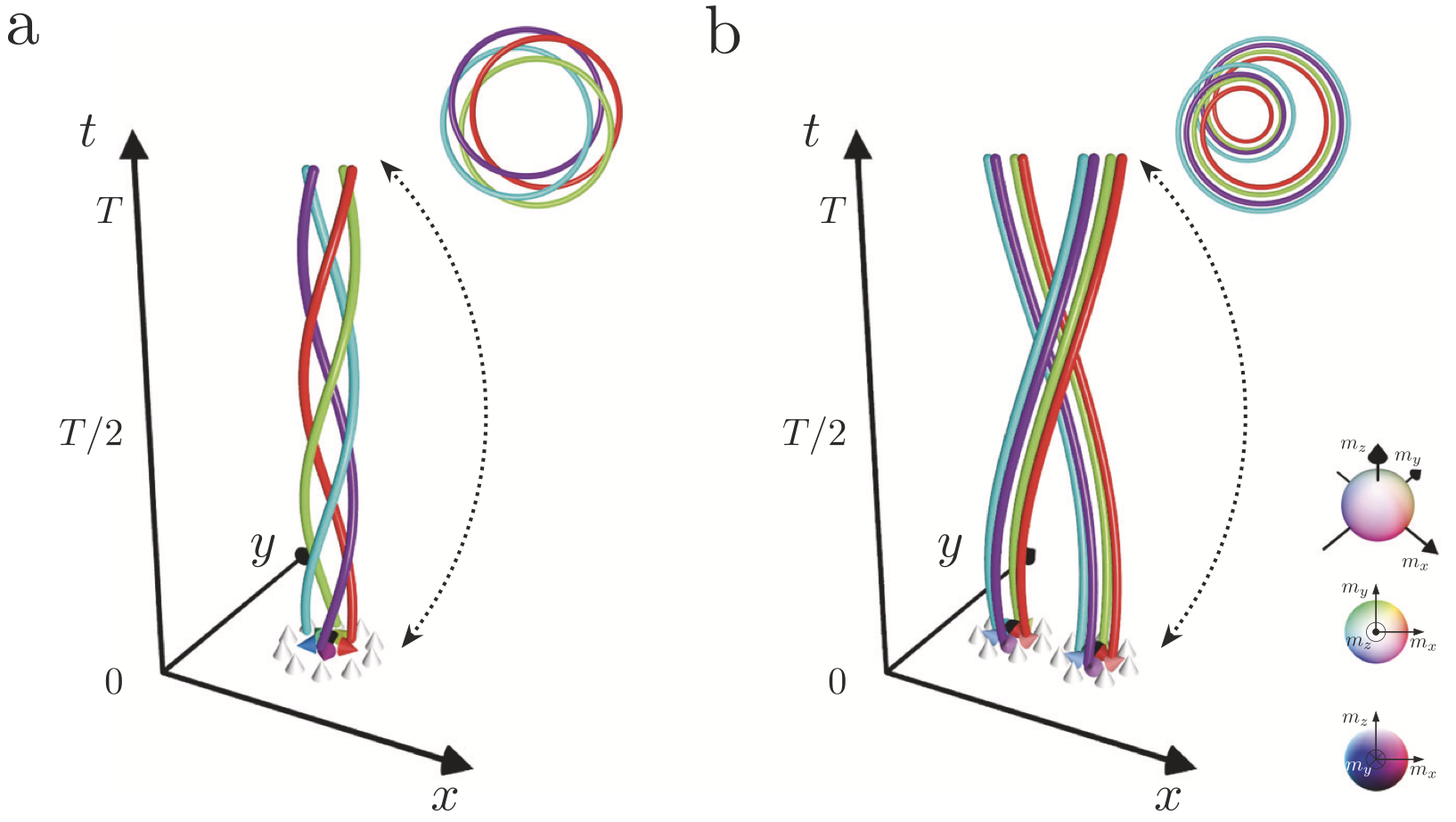
Spacetime magnetic hopfions from internal excitations and braiding of skyrmions
Spatial topology endows topological solitons, such as skyrmions and hopfions, with fascinating dynamics. However, the temporal dimension has so far provided a passive stage on which topological solitons evolve. Here we construct spacetime magnetic hopfions: magnetic textures in two spatial dimensions that when excited by a time-periodic drive develop spacetime topology. We uncover two complementary construction routes using skyrmions by braiding their center of mass position and by controlling their internal low-energy excitations. Spacetime magnetic hopfions can be realized in nanopatterned grids to braid skyrmions and in frustrated magnets under an applied AC electric field. Their topological invariant, the spacetime Hopf index, can be tuned by the applied electric field as demonstrated by our collective coordinate modeling and micromagnetic simulations. The principles we have introduced to actively control spacetime topology are not limited to magnetic solitons, opening avenues to explore spacetime topology of general order parameters and fields.
R. Knapman, T. Tausendpfund, S. A. Díaz, and K. Everschor-Sitte
Commun. Phys. 7, 1 (2024)
